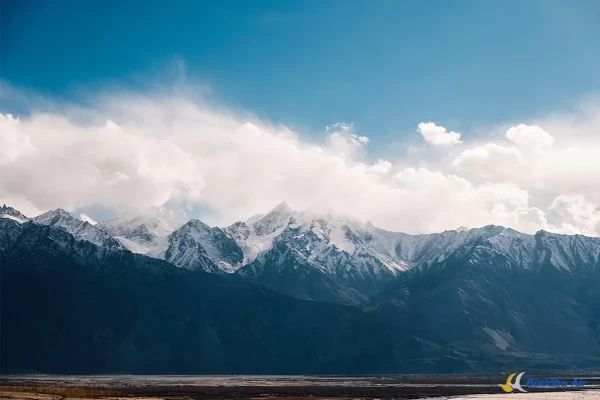Sacred Mountains of Nepal: Pilgrimage Sites and Its Significance

Nepal is a land of towering himalayas with diverse culture, religion and residing world’s highest as well as sacred mountains. The majestic mountains of Nepal are considered sacred places by many religious groups and are worshiped as Hindu along with Buddhist Gods and Goddesses. Sherpas, an icefall doctors and ethnic group of Nepal known for their extreme mountaineering skill residing in himalayan regions have been worshiping these mountains for decades as abodes of gods and goddesses.
These sacred mountains attract pilgrims, tourists, and spiritual seekers from all over the world due to its religious and adventurous significance.
Thus let's explore the sacred mountains of Nepal, their religious significance, and the pilgrimage sites that hold deep spiritual importance in the hearts of many.
1. Mount Everest: Sagarmatha, the Forehead of the Sky
Mount Everest, towering tall at 8849 meters above sea level also known as Sagarmatha in Nepali is not only the highest mountain in the world but also one of the sacred sites. Many mountaineers and locals worship to seek blessings before embarking on their journey as they believe that the goddess Miyolangsangma resides on the top of Mount Everest.
Base of Mount Everest is dotted with monasteries, stupas, and prayer flags, which holds significance to Buddhists pilgrims residing all over the world. On the route to Everest Base Camp, Tengboche Monastery is located where the Mani Rimdu festival is celebrated every year. During the festivals monks and pilgrims gather to pray, chant, and perform rituals to appeal the blessings of the deities.
2. Mount Machapuchare: The Fishtail Sacred Mountains of Nepal
Mount Machapuchare, one of the sacred mountains in Nepal stands at 6,993 meters in Annapurna massif of Gandaki Province. It is considered one of the most sacred mountains in Nepal as it has never been climbed, and touched. Mt Machapuchare is translated as “Fishtail Mountain” in English due to its distinct twin peaks that look like the tail of a fish. The mountain has never been summited and local Gurung people worship it as they believe it to be the abode of Lord Shiva. It is also reckoned that Lord Shiva resides on the summit thus attempting to climb the mountain would be an act of dishonor.
The Annapurna Base Camp (ABC) trek offers stunning views of Machapuchare allowing the trekkers to awe with its presence.
3. Mount Annapurna: Goddess of the Harvest
Mount Annapurna is the 10th highest peak in the world and one of the sacred regions in Nepal is named after the Hindu “Goddess of Harvest and Food”. Thus, the mountain is worshiped as a symbol of sustenance and divine providence.
Due to its spiritual significance and breathtaking views, the Annapurna region is a popular destination among trekkers and tourists. Two of the most famous trekking routes, the Annapurna Circuit and Annapurna Base Camp (ABC) lie along these trails allowing the travelers/pilgrims to bind themselves with the numerous temples, shrines, and prayer flags along the way.
The Muktinath Temple, one of the sacred pilgrimage sites in Nepal can be located at the foot of the Thorong La pass on the Annapurna Circuit. The temple holds significance to both Hindus and Buddhists devotees thus pilgrims pay homage to the eternal flame, god of fire (Agni). It is also believed to be a place of salvation to attain liberation from the cycle of birth and rebirth.
4. Mount Dhaulagiri: The White Mountain
Mount Dhaulagiri also known as white mountain due to its massive snow-covered slopes. It is the seventh highest peak in the world and one of the sacred mountains in Nepal. Local people along with both Hindu and Buddhist worship Mt. as they believe that the mountain is the home to the Gods and Goddesses.
Mt. Dhaulagiri can be spotted from different hills and routes like Annapurna Circuit Trek, Khopra Ridge Trek, Annapurna Circuit Trek, Poon Hill, Muldai Hill, and Jomsom etc. To see the clear view of Mount Dhaulagiri, the best time to visit Nepal is during Spring and Autumn when the weather is clear.
Dhaulagiri Circuit trek is considered to be one of the challenging routes however it is a spiritually rewarding journey. Pilgrims and trekkers trek through the remote villages, dense forests, and high mountains providing peace of mind and spiritual energy.
Conclusion
The sacred mountains of Nepal are not only natural wonders but also connected spiritually attracting pilgrims and trekkers from all corners of the globe. These mountains are worshiped as they are believed to be gods and goddesses for Hindus and Buddhists. These sites offer a unique blend of physical challenge and spiritual reward enabling the pilgrims to connect with nature and their gods and goddesses. Besides, these natural wonders manage to awe the trekkers and pilgrims every time.
Likewise, since they are spiritually rewarding, these sacred mountains of Nepal inspire devotion to those who seek their blessings and remain an enduring testament to the country's rich religious heritage.
